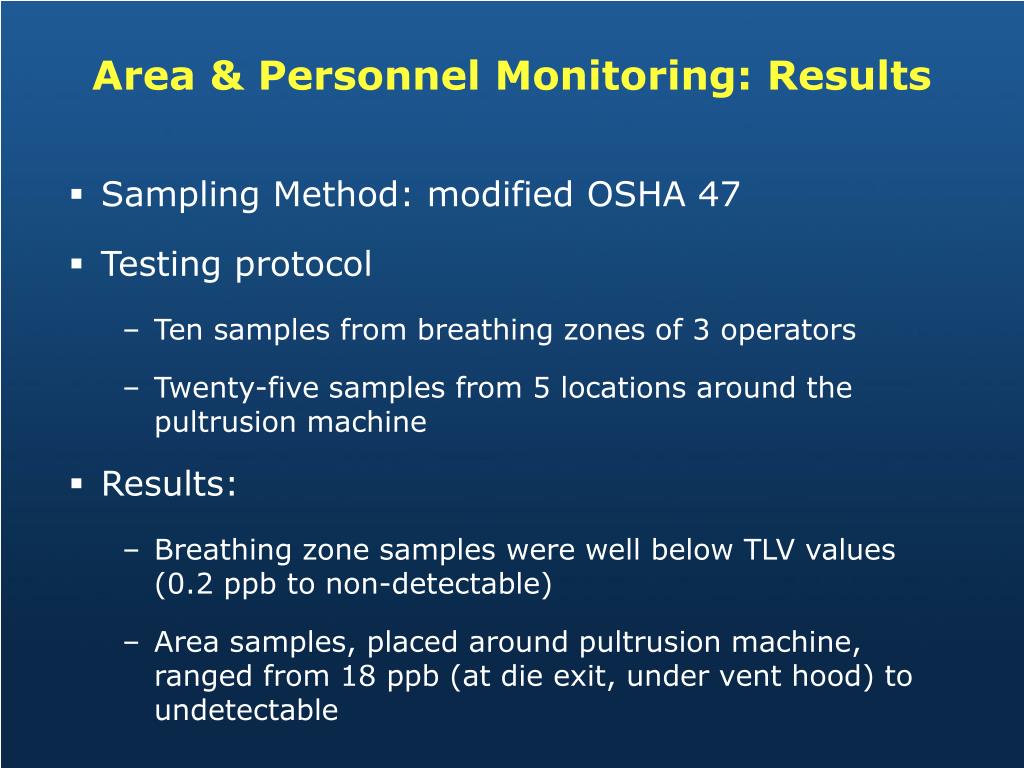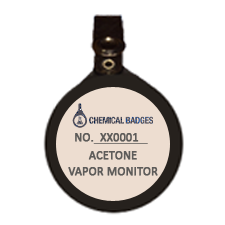

These tests, if in line with acceptable exposure levels and performed correctly, will usually satisfy the standard’s “Exposure Assessment” as well as the “Performance Option” and “Scheduled Monitoring” requirements for Table 1 deviation.
#OSHA BREATHING ZONE RADIUS VERIFICATION#
Since these tests are relatively inexpensive and will serve to establish future PPE requirements, we recommend initial and scheduled verification testing in accordance with 1926.1153 (d)(2)(iii)(B-E) for each task and employee type that deviates from Table 1. Alternate Control Methods: Disregarding Table 1įor tasks not listed, control methods not adhered to, or when employers do not properly implement effective engineering controls or practices listed in Table 1, there are several methods available that offer compliance, which will likely be sufficient for many situations.įirst, remember that employers must ensure that workers are not exposed to greater than the PEL of 50 ug/m 3, for an 8-hr TWA. Our results suggest that compliance costs and unproductive manpower estimates may have been grossly overstated. It should be noted that these precautions are often required with even the most sophisticated dust control systems. While care, wetting, and precautions must be adhered to when changing filters or emptying bags, the common ShopVac tm has proven to be a workable and low-cost solution in a majority of common construction applications. This is accomplished at the source of generation while maintaining acceptable production levels. Atmospheric testing indicates that using HEPA filters and pre-filtering on commercially available shop-type vacuums is extremely effective for removing airborne crystalline silica to levels significantly below the new PEL, and in many cases the Action Level. When companies cannot use water to control the generation of airborne silica dust, ordinary shop vacuums can be effective if they are properly equipped and handled. While some applications will require more advanced equipment, it does not appear that most construction exposures will warrant such complex approaches. Vacuum-Based TechnologyĮngineering control requirements, such as vacuum technologies, have needlessly alarmed many in affected industries. OSHA, furthermore, crafted the new silica rule to encourage its use.

In most cases, they can be used instead of purchasing elaborate technologies. Water Water WaterĪs with many new mandates, the remedy is less likely to be a complete rewrite of existing practices than a fine-tuning that should have been done in the first place.Ĭommon solutions like applying water at the source work to reduce airborne concentrations to acceptable levels in more applications than is initially apparent. Custom performance-based solutions are still allowable under the new standard if proper atmospheric testing is conducted to verify effectiveness of non-authorized controls or under-exposure. Since the early 1990’s, OSHA began using performance-based standards to address over-regulation concerns and to allow employers the ability to craft workplace-specific compliance solutions.


 0 kommentar(er)
0 kommentar(er)
